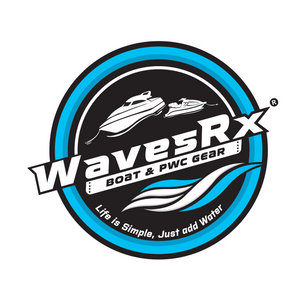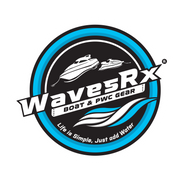Troubleshooting a Stuck Boat Trailer Winch: What to Do
Boat trailer winches are a critical component in making sure your boating excursions start and end smoothly. From loading to unloading your boat effortlessly, a well-functioning winch takes a lot of the stress out of your boating adventures. However, when your winch gets jammed, it can feel like a massive roadblock stands in the way of your water escapades. Understanding the ins and outs of how to troubleshoot a stuck boat trailer winch can save you from unnecessary hassle and get you back on track to your favorite maritime activities.
Imagine planning a perfect day by the water only to be stuck trying to figure out why your winch isn't operating as it should. Having knowledge of the underlying reasons why winches can get stuck is key. Mechanical failures, rust, or misuse are common culprits responsible for a stuck winch. By knowing these reasons, you can better prepare to tackle the issue head-on.
Identifying the Problem
Recognizing why your boat trailer winch is stuck is your first step toward solving the problem. A few factors often contribute to this issue:
- Mechanical Failure: Internal parts of the winch could experience malfunctions. This can be due to wear and tear over time, wrong usage, or lack of lubrication, leading to the components jamming or breaking down.
- Rust: Given the winch's exposure to water and the elements, corrosion is a real threat. Rust can cause the winch to seize and prevent it from moving smoothly.
- Improper Use: Sometimes, applying too much load or improper handling can cause the cable to tangle or bind, locking the winch's operation.
Knowing these common problems can help you quickly assess what's wrong when your winch doesn't cooperate.
Immediate Steps to Take
When you discover a stuck winch, safety should always be a priority. Here are some steps to tackle the issue right away:
1. Ensure Safety First: Before diving into fixing the winch, detach the power source if it's electric. Wear protective gloves to avoid injuries from sharp edges or snapped cables.
2. Visually Inspect the Winch: Look for obvious signs of damage, rusting, or tangling. Understanding the situation can help you decide the next action.
3. Have Essential Tools Handy: Collect basic tools like wrenches, lubricating oil, and a rust remover. Having these nearby simplifies efforts and aids effective troubleshooting.
By maintaining safety and having some basic tools at your disposal, you can assess the problem without unnecessary complications. The goal is to identify any obvious issues before deciding if deeper troubleshooting is needed or if professional assistance should be called upon.
Detailed Troubleshooting
When you need to fix a stuck winch, breaking down the problem into manageable parts can simplify the task. Here's a look at detailed troubleshooting techniques for various scenarios you might face:
- Dealing with Rust: If you see rust, apply a rust remover to loosen up the corroded parts. Make sure the area is well-ventilated, and after treating the rust, lubricate all moving parts with high-quality oil to keep them from seizing again.
- Mechanical Failures: For mechanical issues, inspect for broken gears or levers. If you find any damaged components, it may be time to replace them. You might need a professional to help if it's a complex problem or if you're unsure about tackling it on your own.
- Electrical Issues: If the winch is electric and not responding, check the power connections and the battery. Look for any blown fuses or loose wiring. Tightening connections or replacing faulty fuses can sometimes restore operation.
Knowing when to reach out for professional aid is crucial. If the repair seems beyond your comfort zone or tools at hand, expert help can save time and prevent further damage. Professional intervention ensures the winch is fixed correctly, with the right parts, and guarantees it's ready for the long haul.
Preventive Maintenance Tips
To prevent future snags with your winch, integrating preventive maintenance into your routine is smart. Here are some tips to keep things running smoothly:
- Regular Inspections: Make it a habit to examine the winch before and after use. Look out for rust, wear, or any unusual signs that might hint at an impending problem.
- Cleaning Routine: After every use, especially in salty or wet conditions, clean your winch. Rinse off dirt and salt residue, then dry it thoroughly to prevent rust.
- Lubricate Moving Parts: Ensuring all gears and mechanical parts are adequately lubricated will make them function smoothly. Use a lubricant designed for marine equipment for the best protection.
By adopting these maintenance techniques, you'll extend the life of your winch and avoid unexpected interruptions to your boating fun. A little time spent on regular care saves you from bigger hassles later down the line.
Ready For Your Next Adventure
With proper troubleshooting and maintenance, nothing will stop you from getting your boat in the water smoothly. Addressing problems as they arise and keeping up with regular checks means your boat trailer winch remains reliable and ready for action.
Preparing for trouble-free adventures doesn’t just make boating easier; it adds peace of mind, knowing you're equipped to handle little glitches before they cause bigger delays. Staying informed and being prepared ensures every trip is memorable for the right reasons.
Looking for a reliable way to maintain your boat trailer winch? Stay one step ahead by exploring the boat trailer winch selection from WavesRx. Discover top-quality tools and accessories designed to keep your winch in excellent condition, ensuring smooth boating trips every time.


